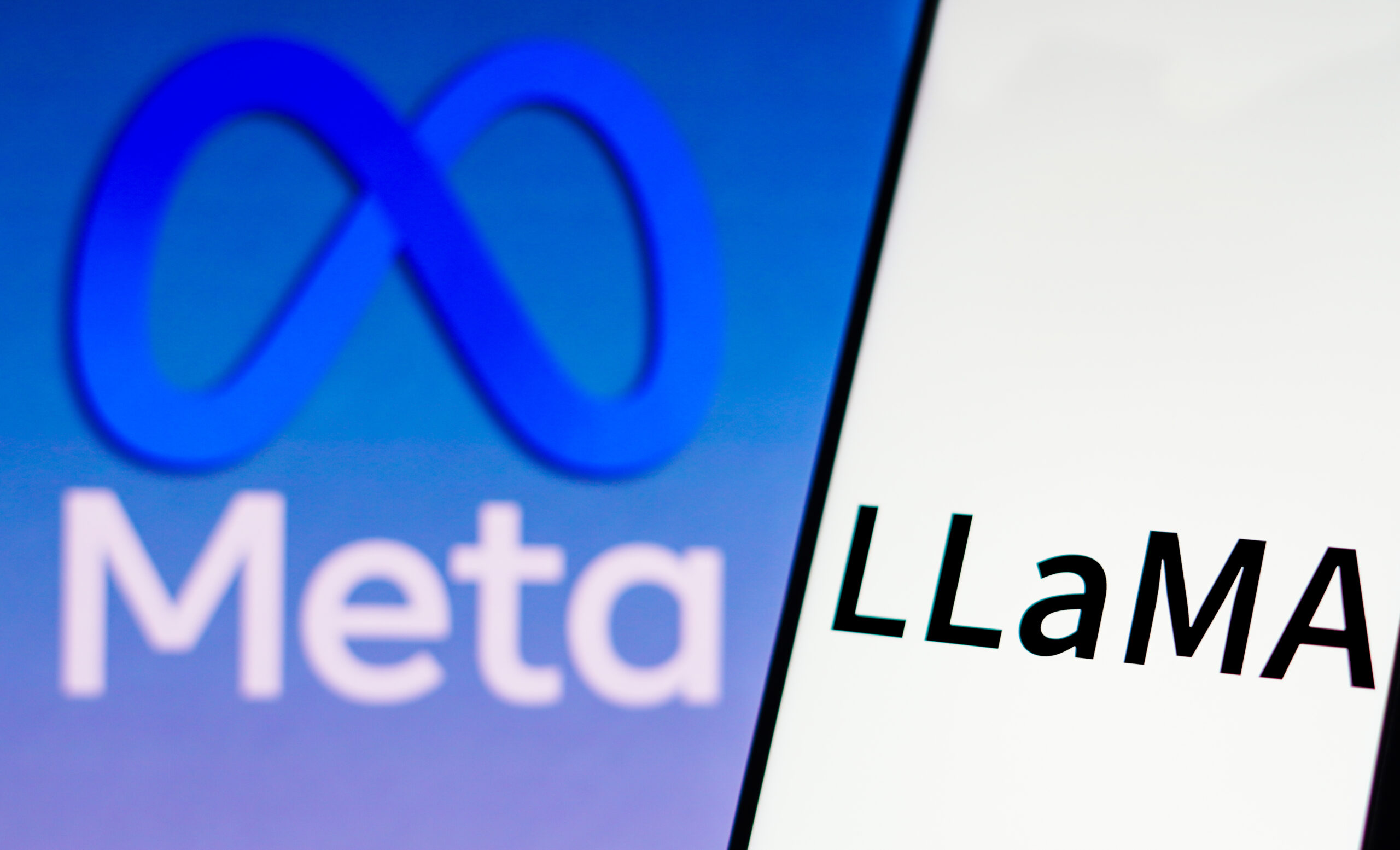Meta’s latest announcement is worthy of attention. The tech giant has unveiled Llama 3.1, a groundbreaking open-source AI model. This model is developed in partnership with NVIDIA and other industry leaders. This cutting-edge system, boasting an impressive 405 billion parameters, represents a significant leap forward in AI capabilities. Boasting over 128,000 token context windows and proficiency in multilingual support, general knowledge, and more, Llama 3.1 revolutionizes interaction with AI technology. Meta’s commitment to open-source development further amplifies the potential impact of this release on your future AI endeavours.
Meta and NVIDIA Collaborate to Unveil Llama 3.1 AI
A Groundbreaking Partnership
- Meta and NVIDIA have joined forces to introduce Llama 3.1, the latest iteration of Meta’s open-source AI model. This partnership represents a leap forward in artificial intelligence. Where it combines Meta’s expertise in large language models with NVIDIA’s cutting-edge hardware and software capabilities. The result is a powerful AI system. This system also pushes the boundaries of what’s possible in natural language processing and machine learning.
Unprecedented Scale and Capabilities
- Llama 3.1 boasts an impressive 405 billion parameters; one of the largest and most sophisticated AI models available today. This massive scale allows for unprecedented performance across a wide range of tasks. You’ll find that Llama 3.1 excels in areas such as multilingual support, general knowledge, mathematical reasoning, and tool use. These capabilities open new possibilities for developers and researchers working on complex AI applications.
Enhanced Context Understanding
- One of the most notable features of Llama 3.1 is its expanded context window of 128,000 tokens. This significant increase allows the model to process and understand much longer pieces of text. Thus, enabling more accurate long-form summarization and the ability to handle complex, multi-step queries. It is now leverageable to utilise these expanded context windows. Furthermore, it can be utilised to develop AI applications that require a deep understanding of extensive documents or intricate conversations.
Fostering Innovation Through Open-Source
- Meta’s commitment to open-source AI is evident in its decision to make Llama 3.1 accessible to the wider developer community. This approach not only democratizes access to cutting-edge AI technology but also encourages innovation on a global scale. As a developer, you can now use Llama 3.1’s outputs to train smaller, more specialized models, tailoring the technology to your specific needs and applications.
Key Capabilities of the Llama 3.1 Model
Enhanced Language Processing
- Llama 3.1 demonstrates remarkable advancements in natural language processing. You’ll find its multilingual support to be particularly impressive, allowing for seamless communication across various languages. This capability extends beyond mere translation, encompassing a nuanced understanding of cultural contexts and idiomatic expressions. The model’s general knowledge base has been significantly expanded, enabling you to engage in more diverse and in-depth conversations on a wide range of topics.
Advanced Mathematical Abilities
- When it comes to mathematical computations, Llama 3.1 showcases exceptional prowess. It’s reliable for complex calculations, statistical analyses, and even advanced problem-solving in fields such as physics and engineering. The model’s ability to break down intricate mathematical concepts makes it an invaluable tool for both educational and professional applications.
Improved Tool Integration
- One of Llama 3.1’s standout features is its enhanced tool use capabilities. You’ll find that it seamlessly integrates with various software and platforms, allowing for more efficient workflow management and data processing. This integration extends to APIs, databases, and other digital tools, making it a versatile asset in your technological ecosystem.
Extended Context Window
- With an impressive 128,000-token context window, Llama 3.1 excels in handling long-form content. You can now utilize the model for comprehensive document summarization, in-depth literature reviews, and complex multi-step queries. This extended context allows for a more nuanced understanding and generation of content. Thus, significantly improving the model’s ability to maintain coherence and relevance over extended interactions.
Open-Source Flexibility
- Meta’s commitment to open-source AI is evident in Llama 3.1’s design. As a developer, you have the unique opportunity to use the model’s outputs to train smaller, more specialized models. This flexibility promotes innovation within the AI community. Thus, allowing tailoring the technology to specific needs and applications while fostering a collaborative environment for AI advancement.
How Llama 3.1 Advances Open-Source AI

Expanding Accessibility and Innovation
- Llama 3.1 represents a significant leap forward in open-source AI, democratizing access to cutting-edge language models. By making this powerful tool freely available, Meta empowers developers, researchers, and businesses to harness state-of-the-art AI capabilities. All of which without the constraints of proprietary systems. This open approach fosters innovation. Thus, allowing a diverse community to build upon and improve the model, potentially leading to breakthroughs in various AI applications.
Enhanced Capabilities and Performance
- With its impressive 405 billion parameters, Llama 3.1 offers substantially improved performance across a wide range of tasks. The model’s enhanced multilingual support enables more accurate and nuanced communication across languages, breaking down barriers to global collaboration and information exchange. Additionally, its expanded general knowledge base and improved mathematical abilities make it a versatile tool for complex problem-solving and data analysis.
Facilitating Long-Form Content Processing
- One of Llama 3.1’s standout features is its extended 128,000-token context window. This advancement allows the model to process and comprehend much longer pieces of text, opening new possibilities for content summarization and in-depth analysis. Users can now input extensive documents, research papers, or even entire books, receiving comprehensive summaries and insights that capture the nuances of lengthy texts.
Promoting Collaborative AI Development
- Meta’s decision to allow developers to use Llama 3.1’s outputs for training smaller models is a game-changer in the AI landscape. This approach encourages a collaborative ecosystem where developers can create specialized, more efficient models tailored to specific use cases. By leveraging Llama 3.1 as a foundation, smaller teams, and organizations can accelerate their AI development processes, potentially leading to a proliferation of innovative AI solutions across various industries.
Accessibility and Innovation Enabled by Llama 3.1
Democratizing AI Development
- Llama 3.1’s open-source nature marks a significant step towards democratizing AI development. As a developer, you now have unprecedented access to a state-of-the-art language model with 405 billion parameters. This accessibility allows you to explore, experiment, and innovate without the constraints typically associated with proprietary AI models. By leveraging Llama 3.1’s capabilities, you can create specialized applications tailored to specific industries or niche markets, fostering a new era of AI-driven solutions.
Enhancing Multilingual Capabilities
- With its improved multilingual support, Llama 3.1 opens doors to global communication and understanding. You can now develop applications that break language barriers, facilitating cross-cultural exchanges and expanding your reach to international markets. This feature is valuable for businesses looking to localize their products or services and for researchers working on language preservation and translation projects.
Advancing Tool Use and Integration
- Llama 3.1’s enhanced tool use capabilities enable you to create more sophisticated AI-powered systems. You can now integrate the model with various external tools and APIs, allowing for complex problem-solving and task automation. This advancement paves the way for innovative applications in fields such as data analysis, content creation, and decision support systems.
Empowering Long-Form Content Processing
- The extended 128,000-token context window of Llama 3.1 revolutionizes how you can approach long-form content processing. This feature allows you to develop applications capable of summarizing extensive documents, analyzing complex datasets, or generating comprehensive reports. By harnessing this capability, you can create tools that significantly enhance productivity in industries dealing with large volumes of textual information, such as legal, academic, or media sectors.
The Future of AI: What’s Next for Meta and NVIDIA?
As you look towards the horizon of artificial intelligence, the collaboration between Meta and NVIDIA promises to reshape the landscape of AI development and application. Their joint efforts on projects like Llama 3.1 are just the beginning of what could be a transformative partnership in the tech world.
Advancing Open-Source AI
- Meta’s commitment to open-source AI models is likely to continue, with future iterations of Llama expected to push the boundaries of accessibility and performance. You can anticipate seeing more powerful models with even larger parameter counts and expanded capabilities. These advancements may lead to AI systems that can handle increasingly complex tasks, from advanced natural language processing to sophisticated problem-solving in various domains.
Hardware Innovations
- NVIDIA’s expertise in GPU technology will play a crucial role in the future of AI development. You can expect to see new hardware solutions specifically designed to accelerate AI training and inference. These innovations may include more energy-efficient chips, improved memory architectures, and specialized processors that can handle the demands of next-generation AI models like Llama 3.1 and beyond.
AI Integration Across Platforms
- The partnership between Meta and NVIDIA is likely to result in deeper AI integration across various platforms and services. You might see more sophisticated AI features in social media, virtual reality experiences, and enterprise solutions. This could lead to more personalized user experiences, enhanced content moderation, and improved business analytics tools powered by cutting-edge AI models.
As these technological giants continue to push the boundaries of what’s possible in AI, you can expect to see groundbreaking applications that were once the stuff of science fiction become reality. The future of AI, shaped by collaborations like that of Meta and NVIDIA, promises to be both exciting and transformative across multiple industries and aspects of daily life.
In Conclusion
As you’ve seen, Meta’s Llama 3.1 represents a significant leap forward in AI technology. By collaborating with NVIDIA and other industry leaders, Meta has created a model that pushes the boundaries of what’s possible in natural language processing and machine learning. The open-source nature of Llama 3.1 ensures that its benefits will ripple throughout the AI community, fostering innovation and democratizing access to cutting-edge AI capabilities. As you consider the implications of this advancement, remember that Llama 3.1 is not just a tool, but a stepping stone towards a future where AI seamlessly integrates into our daily lives, enhancing our ability to process information and solve complex problems.
More Stories
Philippines Launches Comprehensive Crypto Reporting Framework for Financial Transparency
CARF mandates that domestic cryptocurrency platforms and intermediaries report cross-border digital asset transactions.
Threads Strengthens Decentralized Identity with Federated Feed and Profile Discovery
Meta introduces federated feed and profile discovery features to strengthen decentralized identity in Threads.
Facebook Shifts All Videos to Reels Format in Major Platform Overhaul
Facebook is making a bold move to redefine its video-sharing landscape as it transitions all videos into the Reels format.
Circumvent Lands $6M To Scale AI Cloud Security Platform
Circumvent, an innovative cybersecurity startup has secured $6 million in seed funding to boost its mission in cloud infra security.
Pushing Compute Limits with NextDC’s Ultra-Dense Melbourne Data Center
In today’s fast-changing digital world, a strong and efficient computing infrastructure is more essential than ever. You now stand at...
OpenAI Expands Cloud Footprint with Strategic Google Partnership
OpenAI expands its cloud infrastructure capabilities by partnering with Google Cloud. The collaboration marks a pivotal shift. OpenAI is now...


